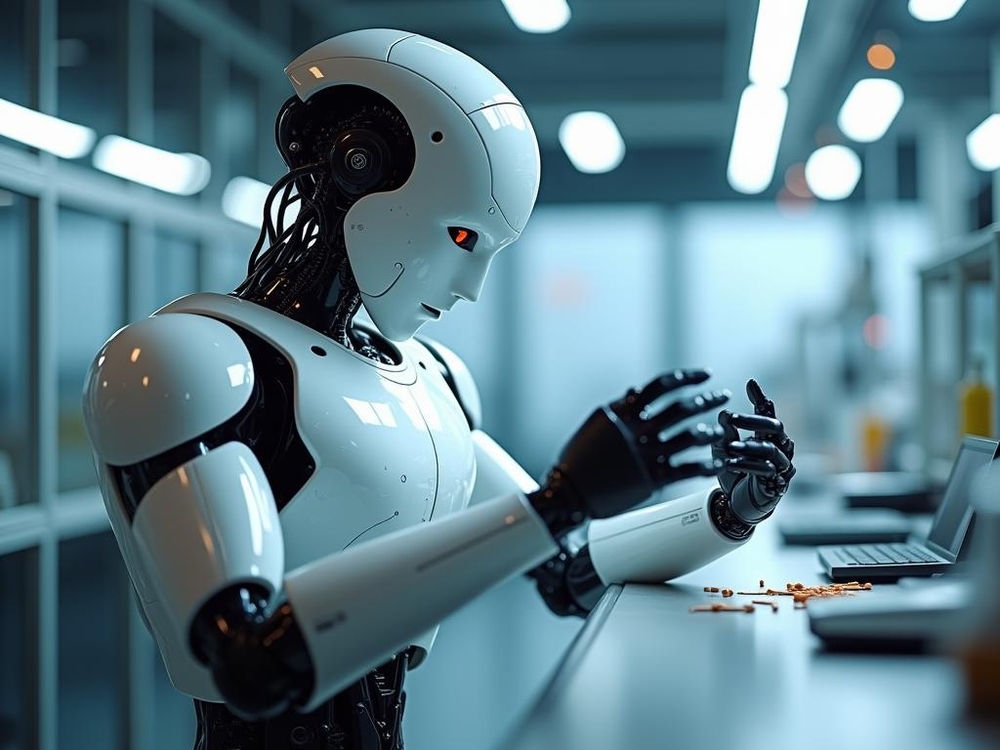Published
- 5 min read
Google AI Robotics: Advancements and Impact

Google’s new robot AI can fold delicate origami, close zipper bags without damage
Google Gemini Robotics AI gives robots fine motor skills and adaptability for general use.
I’ve always been fascinated by how technology intersects with everyday life. Innovation often transforms how we handle simple tasks, doesn’t it? When we talk about artificial intelligence and robotics, we’re not just discussing abstract concepts. We’re exploring the future of how we might live, work, and interact with the world.
Recently, Google DeepMind introduced two new AI models: Gemini Robotics and Gemini Robotics-ER. These aim to help robots interact with the world more effectively. They’re like a step toward having humanoid robot assistants.
Crafting hardware for robots is progressing steadily. Yet, building AI for autonomously piloting these robots in novel settings remains quite challenging. This is known as “embodied AI.” It’s a big goal for many tech giants, and it could transform robotics into practical helpers in the physical world.
Google’s models build on their language model foundation, adding abilities for robots. Gemini Robotics has “vision-language-action” abilities. It processes visual info, understands commands, and performs tasks. Gemini Robotics-ER focuses on “embodied reasoning,” improving spatial understanding.
Picture asking a robot to “pick up the banana and put it in the basket.” It uses a camera to recognize the banana and guides its arm to do the task. Or you might say, “fold an origami fox,” and it carefully folds the paper into a fox.
In 2023, Google launched an earlier model towards more generalized robotic capabilities. This used internet data to help robots understand commands better. Now, Gemini Robotics has made another leap, executing complex tasks that were impossible before.
Previous models were limited to known movements. Gemini Robotics shows better dexterity, now doing tasks like origami folding or closing Zip-loc bags. This shift suggests DeepMind may have begun solving a big robotics challenge: turning “knowledge” into precise, careful actions in the real world.
Better results in new scenarios
According to DeepMind, Gemini Robotics excels in generalizing. It performs novel tasks without specific training. This is crucial because skepticism lingers about humanoid robots’ utility. Many companies have shown such robots, but some come with remote human control.
Google aims to create a generalist robot brain. They’ve partnered with a company to build the next generation of humanoid robots using Gemini 2.0.
Gemini Robotics can control various robot types, from research systems to complex humanoid platforms. The humanoid robot approach is fairly new for Google’s AI models.
Other companies have advanced humanoid robotics hardware, getting funding for their designs. Still, an AI “driver” to make them truly valuable is elusive. Google has granted limited access to Gemini Robotics-ER to trusted robotics companies.
Safety and limitations
Google emphasizes safety with a “layered, holistic approach.” They maintain measures like collision avoidance and force limits. The company developed a framework inspired by Isaac Asimov’s Three Laws of Robotics. They also released a dataset for testing robot safety.
This dataset helps researchers test AI models on the potential consequences of robotic actions.
The AI models are still in a research phase, with no commercial applications announced yet. Demo videos show AI-driven progress, but questions remain about real-world performance.
We keep hearing that technology is fast-moving. But when it comes to robots working alongside us, we’ve waited a while. Google’s innovations might not be the final answer. However, they show significant progress toward robots that can work in diverse environments.
Questions and Answers Section
How will AI change robotics?
AI is transforming robotics by enabling machines to perform complex tasks with greater precision and adaptability. Traditional robots typically operate in controlled environments, often repeating tasks without variation. However, with AI integration, robots learn and adapt to new situations, making them more versatile.
AI allows robots to process visual information, understand human language, and execute nuanced tasks. For instance, a robot with AI can recognize a variety of objects and respond to commands like “move the red cup” or “fold this paper into a crane.” This level of understanding and flexibility is pushing robots toward more autonomous roles in places like homes, hospitals, and warehouses. With AI, robots go from rigid task-specific devices to adaptable assistants.
What are Google’s advancements in robotics?
Google’s latest achievements in robotics come through its Gemini Robotics AI model. This model gives robots fine motor skills and improved adaptability. Unlike older systems, these robots comprehend visual and language inputs better, and they act on these inputs with more precision. For instance, they can perform tasks like folding origami or handling zipper bags without damage.
Google’s models mark a move toward robots that understand and interact seamlessly with the physical world. The new technology makes it feasible for robots to function in everyday roles like assisting in elder care or performing tasks in retail stores. Google’s progress includes crafting AI that adapts to new scenarios without needing specific training for each one. They’re on the path to developing robots that might one day work harmoniously among us.
Summary
The article explored Google’s advancements in robotics through its Gemini Robotics AI models. It highlighted how these models enhance robots’ fine motor skills and adaptability. Practical applications and the impact on daily life were discussed. The piece also offered insight into AI’s role in transforming the robotics industry. Looking ahead, these technologies hint at a future where robots work alongside humans across various domains. Stay tuned for further breakthroughs in AI and robotics.